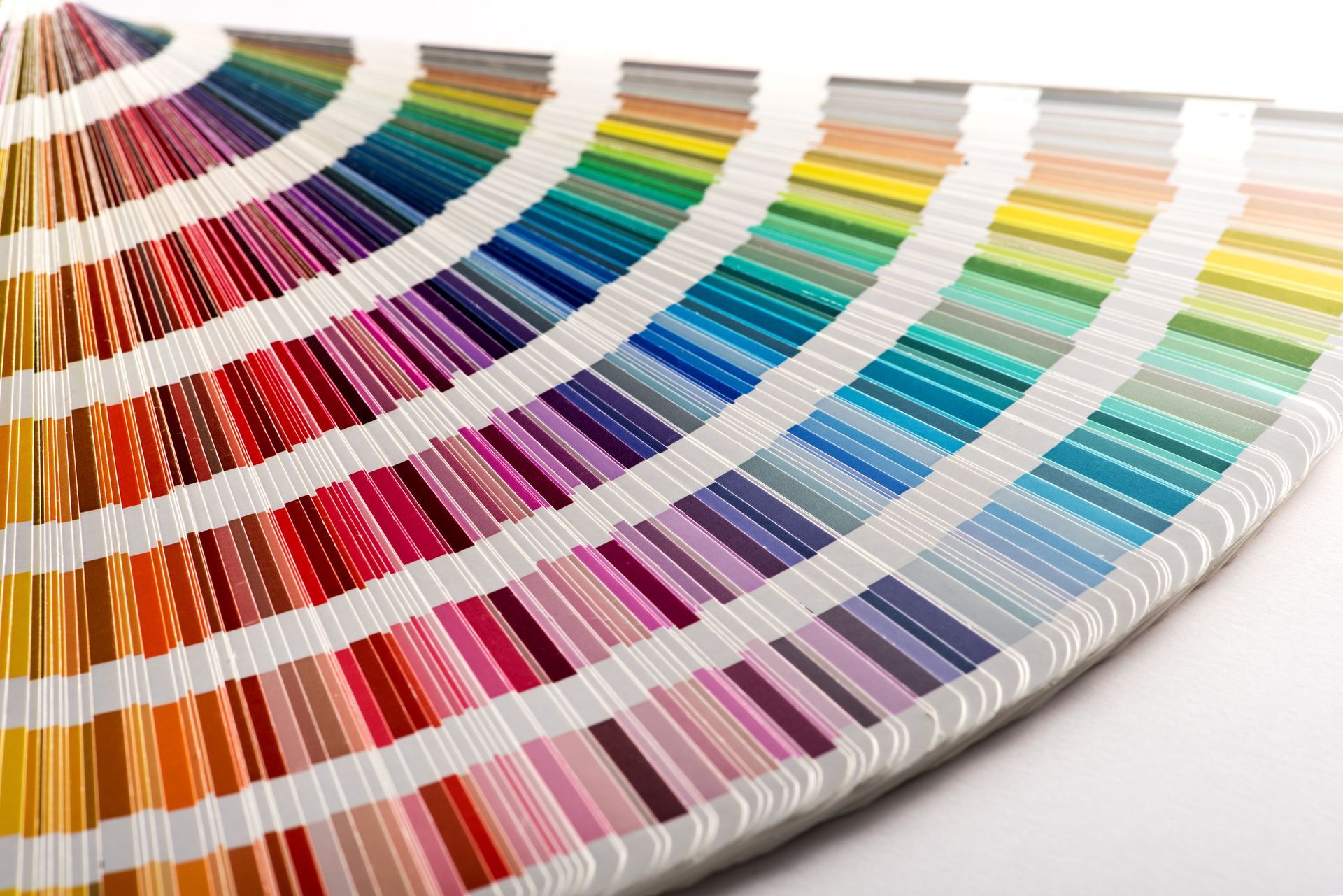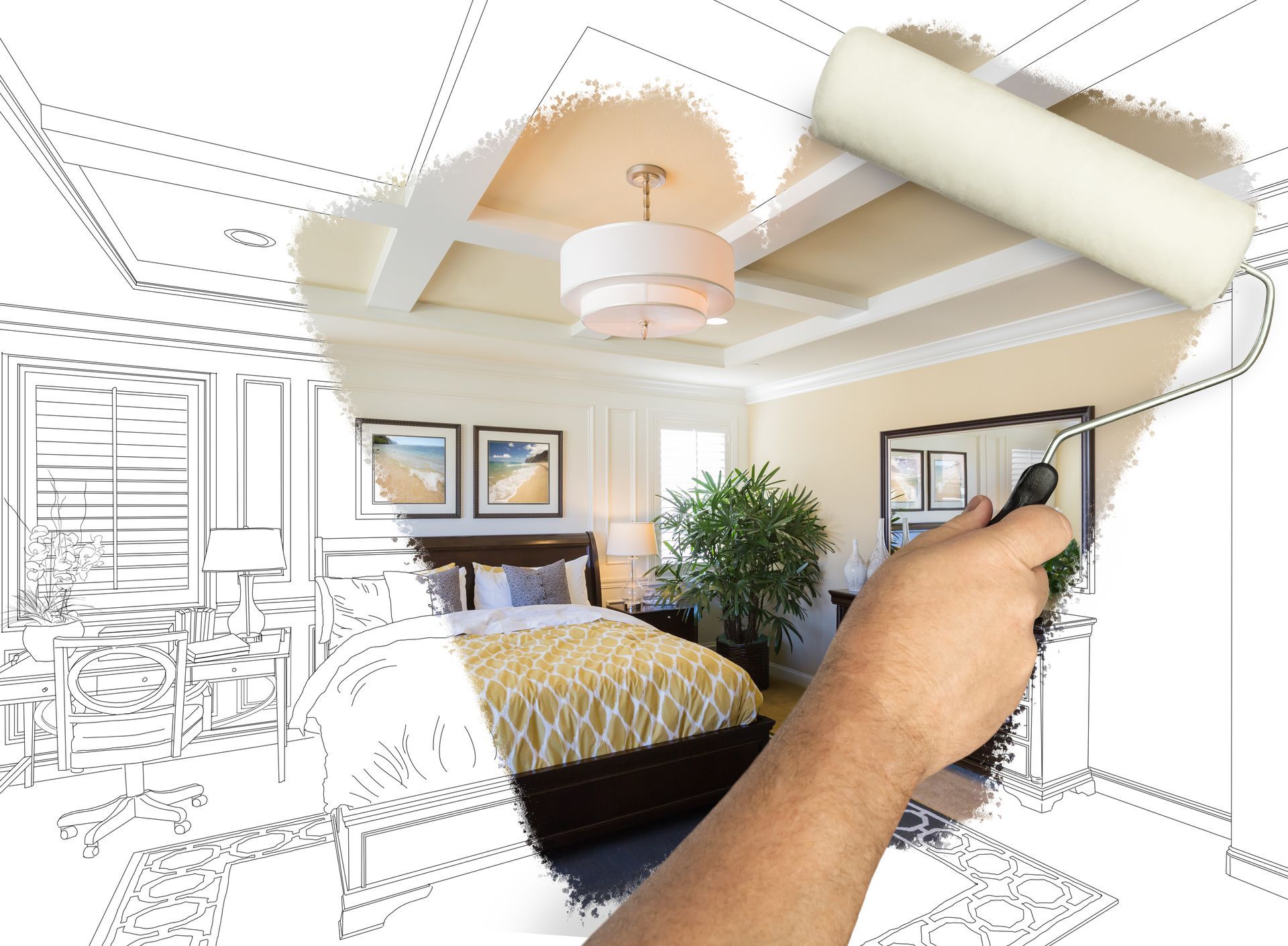When audiences lose themselves in the sweeping grandeur of a medieval castle or feel transported to a gritty 1940s New York alley, they're witnessing the masterful work of scenic artists whose brushstrokes literally paint the story. The art of transforming blank studio spaces into convincing cinematic worlds requires a unique blend of technical expertise, artistic vision, and collaborative spirit that goes far beyond traditional painting techniques.
Every movie set begins as an empty canvas—bare walls, exposed frameworks, and raw materials waiting to be brought to life. The scenic painting process starts long before cameras roll, with artists working closely alongside production designers, set decorators, and directors to ensure every painted surface serves the story's narrative purpose. This collaborative approach means scenic artists must be part artist, part historian, part chemist, and part storyteller—skills that professional painters at Goldstein & Horowitz understand deeply from years of transforming residential and commercial spaces.
The Collaborative Canvas: Working with Creative Teams
The relationship between scenic painters and the broader production team forms the foundation of successful set design. Production designers arrive with detailed concept sketches and color palettes that reflect the director's vision, but it's the scenic artists who translate these ideas into tangible, three-dimensional environments. This collaborative process often involves multiple rounds of color samples, texture tests, and aging techniques that must align perfectly with the cinematographer's lighting plans.
Directors frequently request specific emotional responses from painted environments. A warm, sun-drenched kitchen might need to convey family comfort, while a cold, steel-gray laboratory should evoke clinical detachment. Scenic artists achieve these psychological effects through careful color temperature selection, surface texture manipulation, and strategic weathering techniques that cameras will capture and amplify.
The collaboration extends to practical considerations as well. Set painters must understand how different paint formulations will react under hot studio lights, how certain finishes will appear through various camera lenses, and how aging effects will be read from multiple angles. This technical knowledge ensures that painted surfaces maintain their intended appearance regardless of shooting conditions.
Mastering the Technical Craft
Creating convincing textures and finishes for movie sets demands specialized techniques that extend far beyond traditional house painting. Scenic artists employ methods like sponging, ragging, stippling, and scumbling to create depth and visual interest on flat surfaces. These techniques become particularly crucial when transforming modern materials like foam core and plywood into convincing stone, brick, or weathered wood—similar to the faux finishing work that brings character to residential interiors.
The chemistry of paint selection plays a vital role in achieving authentic-looking results. Water-based paints often serve as base coats for their quick drying properties and ease of cleanup, while specialty mediums like glazes and crackling agents create specific aging effects. According to The Professional Scenic Artist, professional scenic artists maintain extensive knowledge of how different paint types interact, ensuring their layered finishes won't crack, peel, or discolor under studio conditions.
Temperature and humidity control become critical factors in the painting process. Studios must maintain consistent environmental conditions to ensure proper paint adhesion and drying times. Scenic artists often work with specialized ventilation systems and climate control equipment to create optimal conditions for their detailed work.
Period Accuracy Through Paint
Historical authenticity in set painting requires extensive research and attention to period-specific details. A Victorian-era parlor demands different color palettes, paint sheens, and wear patterns than a 1950s diner. Scenic artists spend considerable time studying historical paint formulations, color trends, and aging patterns to ensure their work supports the production's temporal setting—research skills that also benefit historical restoration projects in real-world applications.
Creating period-accurate finishes often involves replicating painting techniques from specific eras. For example, achieving the hand-painted wallpaper look of an 18th-century manor requires understanding traditional stenciling methods and natural pigment characteristics. The Smithsonian's National Museum of American History provides valuable resources on historical paint techniques that scenic artists frequently reference. Similarly, capturing the industrial paint applications of a 1930s factory setting demands knowledge of period-appropriate color schemes and application methods.
The aging process for period sets involves strategic planning of wear patterns, color fading, and surface deterioration that would naturally occur over time. Scenic artists study how different materials age under various conditions, then recreate these effects using specialized glazes, stains, and distressing techniques. This attention to authentic aging helps create believable environments that support the story's timeline.
Time Pressures and Artistic Excellence
Movie production schedules create intense pressure for scenic artists who must deliver museum-quality work under impossibly tight deadlines. Major studio productions often require complete set transformations within days or even hours, demanding efficient workflows and flawless execution. Artists develop systematic approaches to complex paint jobs, often working in teams with clearly defined roles and responsibilities.
The pressure intensifies when working on soundstages where multiple scenes shoot simultaneously. Scenic artists might need to age a pristine set overnight to match continuity requirements, or rapidly transform a space between different time periods within the same film. These challenges require artists to master quick-drying paint systems, portable equipment setups, and efficient color-matching techniques.
Despite time constraints, maintaining artistic integrity remains paramount. Scenic artists develop methods for achieving complex effects efficiently without sacrificing quality. This might involve creating custom stencils for repeated patterns, pre-mixing large batches of specialty colors, or developing shorthand techniques for common aging effects that can be applied quickly but still appear authentic on camera.
Camera-Conscious Painting Techniques
Understanding how painted surfaces will appear through camera lenses fundamentally shapes the scenic artist's approach. Colors that look perfect to the human eye might appear flat or oversaturated on film, requiring artists to adjust their palettes based on the specific cameras and lighting equipment being used. This technical knowledge prevents costly reshoots and ensures visual consistency throughout production.
Different camera angles reveal various aspects of painted surfaces, requiring artists to consider sightlines and viewing perspectives when planning their work. A wall that appears properly aged from one angle might look obviously painted from another, necessitating careful attention to detail on all visible surfaces. Scenic artists often work with stand-ins and test cameras to verify their work from multiple viewpoints before final approval.
Lighting conditions dramatically affect how painted surfaces appear on camera. The same wall might need to look convincingly ancient under warm tungsten lights for interior scenes, then appear naturally weathered under cool daylight for exterior shots. Artists achieve this versatility through careful layering of colors and textures that respond differently to various lighting conditions.
Specialized Effects and Advanced Techniques
Modern scenic artists employ increasingly sophisticated techniques to create convincing special effects through paint alone. Trompe-l'oeil methods can transform flat walls into three-dimensional architectural features, saving production costs while maintaining visual impact. These illusory techniques require precise understanding of perspective, shadow, and highlight placement to convince both cameras and viewers.
Metallic finishes present unique challenges in set painting, as they must appear authentic under studio lighting without creating unwanted reflections or glare. Artists use specialized metallic powders, mica-based paints, and strategic dulling agents to achieve convincing metal surfaces that won't interfere with filming equipment.
Creating fire damage, water stains, bullet holes, and other dramatic effects requires artists to study real-world examples and understand the physics behind different types of damage. This research informs their technique selection and ensures the resulting effects appear authentic rather than obviously painted.
Environmental Considerations in Set Painting
Professional Pathways and Union Standards
For those inspired to pursue scenic artistry professionally, the field offers structured pathways through organizations like the United Scenic Artists Local 829. This prestigious union, which represents scenic artists across theater, film, and television, maintains rigorous standards through their examination process. Aspiring scenic artists can pursue membership through two tracks: Track A requires at least three years of professional entertainment industry experience, while Track B offers an open examination available to anyone 18 or older with relevant art or entertainment experience.
The Track A examination process involves a comprehensive portfolio review featuring specific technical samples, including faux wood and marble work on hard substrates, canvas backdrops, and representational drawings—all demonstrating the precise skills that distinguish professional scenic artists from general painters. According to the USA 829 guidelines, candidates must present samples no smaller than 18"x 24" using traditional scenic painting techniques with water-based paints common to theatrical shops.
Track B candidates face a multi-stage process beginning with a written examination covering scenic terminology and craft knowledge, followed by home project assignments that test skills in reproducing famous paintings, creating wood and marble ornament panels, and executing precise ink wash or charcoal drawings. The process culminates in a practical studio skills test conducted over seven hours, where candidates complete specific assignments under time pressure while being evaluated by union judges.
Environmental Considerations in Set Painting
Professional set painting operations prioritize environmental responsibility through careful material selection and waste management practices. Low-VOC and zero-VOC paint formulations help maintain healthy working conditions for cast and crew while reducing environmental impact. The Environmental Protection Agency emphasizes the importance of these formulations in enclosed studio environments where proper ventilation may be limited during filming.
Proper disposal of paint waste and contaminated materials requires adherence to strict environmental regulations. Scenic artists work with specialized waste management companies to ensure responsible handling of potentially hazardous materials. This environmental consciousness extends to selecting reusable materials and designing paint systems that can be easily modified rather than completely replaced.
The Future of Cinematic Set Painting
Technology continues to evolve the scenic artist's toolkit while preserving traditional craftsmanship values. Digital color matching systems help artists achieve precise color continuity across multiple set pieces, while advanced spray equipment enables more efficient application of complex finishes. However, the fundamental skills of color theory, texture creation, and collaborative problem-solving remain as essential as ever—skills that professional painting contractors apply across various industries.
Virtual reality and augmented reality technologies now allow scenic artists to preview their work in different lighting conditions and camera angles before final application. According to experts, these tools help reduce costly mistakes and ensure painted elements will achieve their intended effect in the final production.
The enduring appeal of practical sets over digital environments ensures that skilled scenic artists will continue playing vital roles in cinematic storytelling. Their ability to create tangible, painterly worlds that actors can inhabit and cameras can capture authentically remains irreplaceable in the filmmaking process. This same attention to detail and technical expertise translates beautifully to residential and commercial projects where clients seek transformative painting solutions.
The next time you're transported by a movie's visual environment, remember the skilled hands and artistic vision of the scenic painters who literally brushed those worlds into existence. Their work demonstrates that painting, at its highest level, is indeed a form of cinematic magic that helps stories come alive on screen. Whether creating fantastical movie sets or transforming your own spaces, the artistry and technical expertise of professional painters brings visions to life—contact Goldstein & Horowitz to discover how these same skills can transform your next project.





